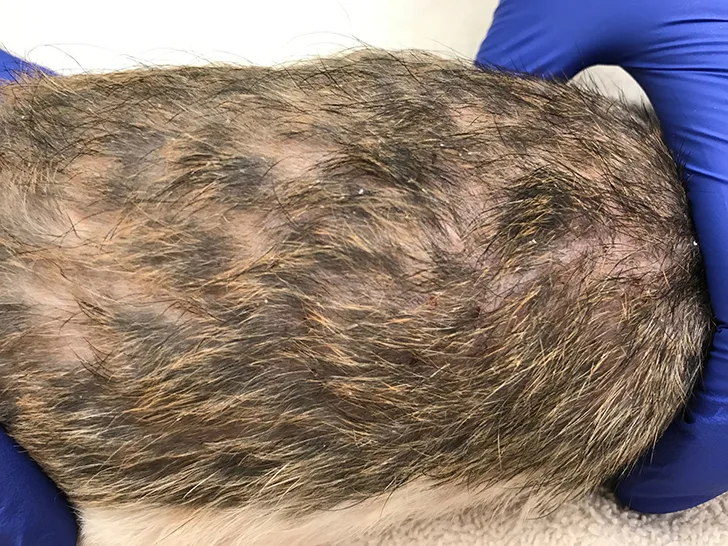Dermatologic Diseases in Pet Rats
David Eshar, DVM, DABVP (ECM), DECZM (SM & ZHM), Kansas State University
In the literature
White S, Bourdeau P, Brément T, et al. Companion rats (Rattus norvegicus) with cutaneous lesions. Vet Dermatol. 2019;30(3):237-242.
The Research …
Because of their gentle character when habituated properly by their owner, rats (Rattus norvegicus) have become common household pets.1 Little preventive care is required for these animals that have relatively short lifespans (ie, 2-3 years), and rats can withstand the problems that come with reduced supervision and suboptimal veterinary care often seen with caged companion mammals relatively well.
In this retrospective review of records from 2 veterinary medical centers, dermatologic conditions seen in pet rats presented for health evaluation were characterized. The study found that skin diseases can make up a large portion (first center, 39%; second center, 47%) of the cases presented for clinical examination and therefore should be added to the list of common conditions seen in pet rats (eg, respiratory infections, mammary gland neoplasia).
Dermatologic diseases in pet rodents have been reported.2-5 Because pruritus is one of the most common clinical signs associated with dermatopathies in pet rodents, timely diagnosis and treatment is required for resolution. In this study, nodules, alopecia, and crusts were also commonly noted. Pododermatitis was also frequently observed, and obesity, poor diet, wire-bottom caging, and excessive use of running wheels were identified as risk factors for this condition.
Many health issues in pet rats result from suboptimal husbandry (ie, environment, diet). A thorough review of husbandry is required for successful diagnosis and treatment of rat dermatoses. Any husbandry deficiencies, once identified, should be addressed and environmental treatments implemented to prevent recurrence and control parasitic infections.2
A detailed dermatologic examination is necessary in all rats presented with skin disease, and the methods described in this study are all commonly used in other companion mammals. However, some owners may decline to perform a wide array of tests, so empiric treatments may be required for presumptive diagnoses; the data from this study suggest that this practice should be discouraged. Furthermore, empiric treatments based on assumptions of what is “common” should be discouraged, as disease occurrence can differ based on geography. Basic diagnostic testing can help ensure accurate and timely diagnosis and resolution for affected patients.

FIGURE 1
Pet rat presented for alopecia, pruritus, and crusting over the dorsum
… The Takeaways
Key pearls to put into practice:
Fecal testing of both clinical and subclinical patients can often reveal the presence of ecto- and endoparasites and should be performed routinely in all rat patients.
If owners decline skin testing or if other tests fail to provide a diagnosis, a full-thickness punch biopsy can be the most helpful test to perform. For example, a 2-mm punch biopsy can be collected with brief anesthesia and a local anesthetic block and the skin later closed with a drop of surgical glue.
Clinicians should be aware that rats are particularly sensitive to repeat intradermal injections, especially when potentially irritating substances (eg, enrofloxacin, ketamine) are administered.